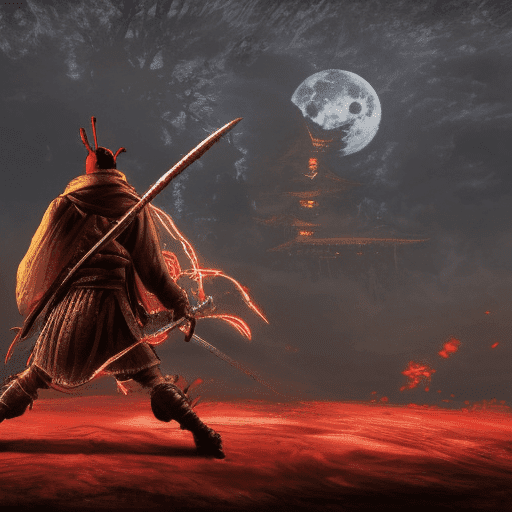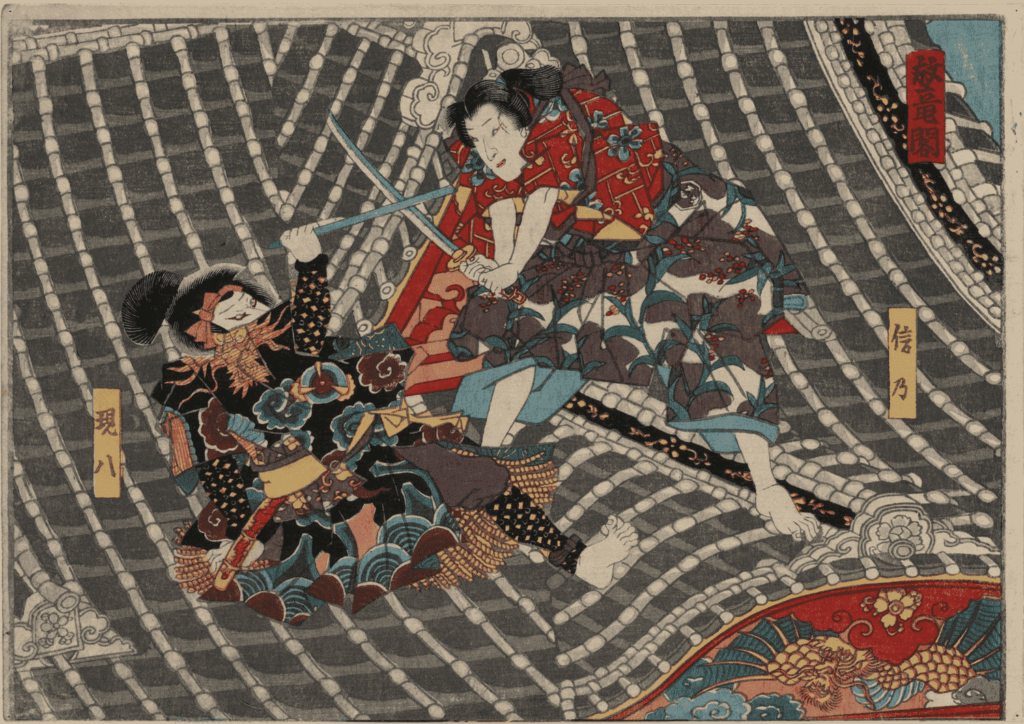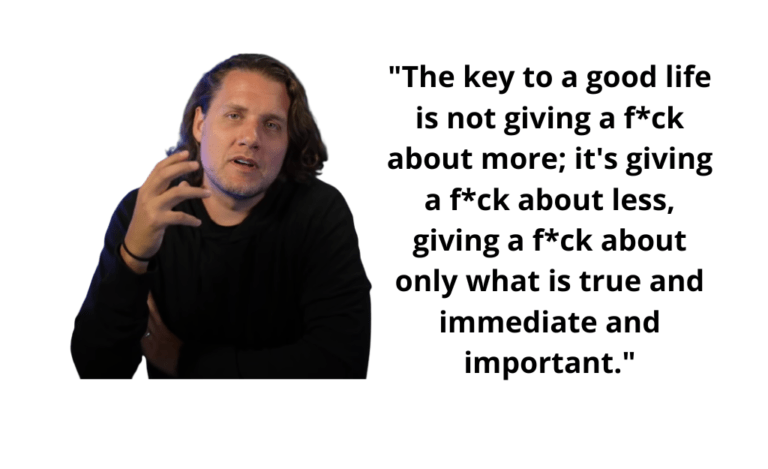Disclaimer: This post may contain affiliate links. For more information, please visit our Disclaimer Page.
Introduction to Miyamoto Musashi’s Biography
Miyamoto Musashi was a legendary Japanese swordsman, philosopher, and writer who lived in the 17th century. He is widely regarded as one of the greatest swordsmen in Japanese history, and his teachings on martial arts and strategy continue to influence practitioners today.
Early Days

Shinmen Musashi-no-Kami Fujiwara-no-Genshin, better known as Miyamoto Musashi, was born in the village of Miyamoto, in Miasaka Province, Japan, on March 12, 1584, was a swordsman, philosopher, strategist, Japanese writer and ronin.
He was also known by Shinmen Takezō, Miyamoto Bennosuke, or, by his Buddhist name, Niten Doraku.

“Musashi” is the name of the area southwest of Tokyo. The treatment “no-Kami” marks the noble origin of the bearer of the title, “Fujiwara,” which is one of the noblest surnames in Japan, with more than a thousand years of history. Musashi’s ancestors were members of a branch of the powerful Harima clan in Kyushu, an island in southern Japan.
When Musashi was seven, his father, Munisai, died or left the family. Soon his mother died, and young Ben-no-Suke, as Musashi was called in childhood, was left in the care of his maternal uncle, who was a monk. In a country torn apart by conflict, the child did not grow up as a helpless orphan. The little boy soon grew into a gruff, headstrong, big-for-his-age teenager.
His quick temper and love of fighting meant that at just thirteen, he beat an adult samurai to death with a stick at his first duel.

At sixteen, the young man decided to become a ronin and embarked on a journey. He toured the country, challenging fighters of various schools and styles.
Traveling around Japan from the ages of 16 to 19, he accumulates more than 60 fights, of which he always wins. He liked to fight with two swords at once: in one hand, he held a long sword – a katana, and in the other – a short sword – a wakizashi.
Career
Soon the whole country was talking about his unusual way of fighting, and the ronin received the nickname “Holy Sword.”
Many young people went to the invincible warrior and asked him to teach them how to fence.
Musashi created and perfected a two-sword kenjutsu technique called “Niten-ryu” and became a trainer.
In everyday life, Miyamoto Musashi was distinguished by eccentric behavior and was extraordinarily talented in the artistic sense: he carved wood, painted pictures, and wrote poems.
Contemporaries talk about his temper, especially when he notices injustices. Several people were punished by him, whom he called ignorant.
There are many stories about Miyamoto Musashi’s skills. One of them tells how one day, the Master was challenged to a duel by a famous samurai (his name has fallen into oblivion), who claimed that he would easily defeat and shame Musashi.
The Master went to him, crossing the river in a boat, drank sake, and recited poetry to the boatman. The boatman noticed that the Master was unarmed and asked what he would use to fight. Musashi said that he didn’t need a sword to calm the challenger. He took a spare oar from the ferryman, roughly trimmed it, giving it a kind of bokken, and said that would do.
Reaching land for the duel, he delivered two quick swings with his staff, knocked the defeated samurai aside, and returned to the boat. The samurai didn’t even have time to draw his sword.

In 1642 he suffered attacks of neuralgia, which led to a worsening of his health. The following year, he retired to a cave called Reigando, handing over the management of the Ichi-Ryu school to his best students.
At that time, his famous “Book of Five Rings” was written – a treatise with instructions and teachings devoted to military affairs.
Nowadays, this work has become popular in business circles. It is believed that it helps to find the right solutions in confusing business situations.
Death

Miyamoto Musashi died of what is believed to be lung cancer on June 13, 1645.
He died peacefully after completing Dokkodo, “The Way of Walking Alone,” or “The Way of Self-Reliance,” the 21 commandments of self-discipline to guide future generations.
His body was buried in a suit of armor in Yuge’s village.
In popular culture
Even in Musashi’s time, there were fictional texts resembling comic books. It is difficult to separate fact from fiction when discussing his life. There have been numerous works of fiction made about or featuring Musashi.
In 2012, writer Sean Michael Wilson and Japanese artist Chie Kutsuwada published an attempt at a more historically accurate manga entitled The Book of Five Rings: A Graphic Novel based on research and translations by William Scott Wilson.
The 2008 video game Ryū ga Gotoku Kenzan! was based on his life and personality.
He also appeared in the manga Baki-Dou as a revived clone of himself with his real soul intact as one of the strongest fighters in the series. He used his two-sword style in almost every combat he was shown.
In the video game Overwatch, the playable character Genji has a voice line that quotes Musashi: “Mi wo sutetemo myōri wa sutezu,” roughly translates to “You may abandon your body, but you must preserve your honor.”
The card game Magic: The Gathering has a card based on him, Isshin, Two Heavens as One, named for his two swords as one technique.
In Cyberpunk 2077, the character Takemura sends a text message to V: “Even should you abandon your body, never abandon your honor. Never stray from the Way. Miyamoto Musashi” This text can only be received after the mission Search and Destroy if the player saves Takemura.
in Wikipedia
Books
- 1605 – The Hyodokyo – The 28 Mirror Ways of Strategy
- 1643 – The Book of Five Rings
- 1645 – Dokkodo – “The Way of Walking Alone.”
F.A.Q. about Miyamoto Musashi
Who is Miyamoto Musashi?

Miyamoto Musashi was a renowned Japanese swordsman and philosopher who lived from 1584 to 1645. He is famous for his unique two-sword fencing style (Niten Ichi-ryū) and undefeated record in his 61 duels.
What is Miyamoto Musashi famous for besides his martial prowess?
Musashi was also a writer and artist. His most well-known work is “The Book of Five Rings” (Go Rin no Sho), a text on martial arts and strategy. His artworks, especially ink paintings, are also highly regarded in Japan.
What is Niten Ichi-ryū?
Niten Ichi-ryū is the two-sword fencing style developed by Miyamoto Musashi. This unique technique involves wielding a katana in one hand and a wakizashi (a shorter sword) in the other, allowing the practitioner to attack and defend simultaneously.
What is “The Book of Five Rings”?
“The Book of Five Rings” is a text by Musashi on Kenjutsu and martial arts in general, philosophy, and personal development. The book is considered a classic and is still studied today by martial artists and business people for its insights into strategy and confrontation.
How did Miyamoto Musashi die?
Miyamoto Musashi died in 1645 from what is believed to be thoracic cancer. He died peacefully after having completed his life’s work, including his book “The Book of Five Rings” and the successful founding and establishment of his school of swordsmanship.
Miyamoto Musashi Quotes
The following are some of our favorite sayings from the legendary swordsman Miyamoto Musashi. Enjoy!
“There is nothingoutside of yourself that can ever enable you to get better, stronger, richer, quicker, or smarter. Everything is within. Everything exists. Seek nothing outside of yourself.”
“Truth is not what you want it to be; it is what it is. And you must bend to its power or live a lie.”
“You must understand that there is more than one path to the top of the mountain.”
“Perception is strong and sight weak. In strategy, it is important to see distant things as if they were close and to take a distanced view of close things.”
“A man cannot understand the art he is studying if he only looks for the end result without taking the time to delve deeply into the reasoning of the study.”
“Study strategy over the years and achieve the spirit of the warrior. Today is victory over yourself of yesterday; tomorrow is your victory over lesser men.”
“Generally speaking, the Way of the warrior is resolute acceptance of death.”
“Perception is strong and sight weak. In strategy it is important to see distant things as if they were close and to take a distanced view of close things.”








